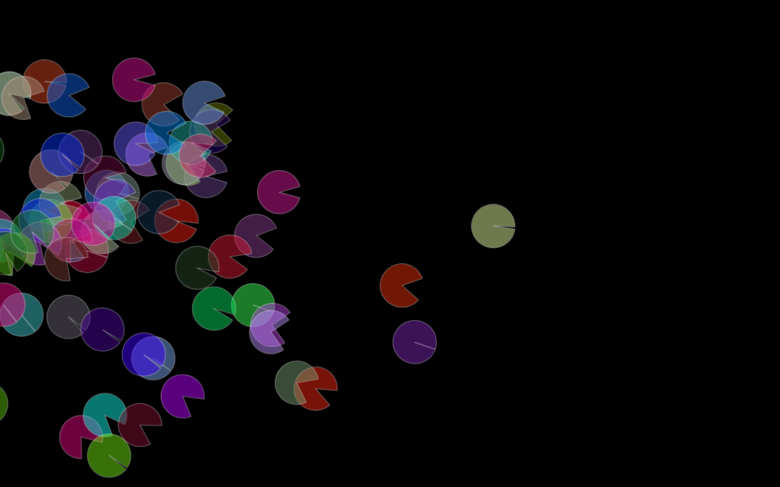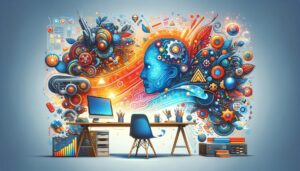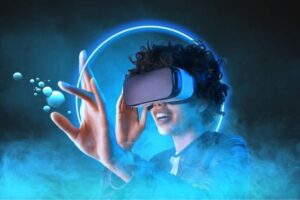Creative coding combines imagination and ingenuity. It is the perfect combination of art and programming, transforming code into stunning images. This unique space is a playground for artists and programmers to explore new media and innovations.
Imagine creating fascinating generative art or interactive real-time installations. Creative coding offers endless possibilities. The way we express ourselves through technology has evolved along with it. Discover this wonderful world and learn how to use creative coding in your projects!
The Intersection of Art and Technology
Art and technology stimulate each other in fascinating ways. Digital technology has expanded the possibilities for creative expression. Contemporary artists combine traditional methods with new tools to captivate audiences like never before. Interactive installations and virtual reality art exhibitions extend the limits of art. Thanks to technology, artists can explore unimaginable ideas and expand their creativity.
Coding has become a modern art. Programmers use algorithms to create stunning images and sounds. This fusion connects human intuition with the possibilities of machines. These technological advances allow artists to create immersive environments that combine imagination with data-driven design. Each image demonstrates this synergy: how far creativity and advanced equipment can go.
Creative Coding Tools and Software
Creative coding requires a variety of tools and applications to experiment with. Processing is an open-source graphics library popular with visual artists. Beginners can take advantage of its simplicity and easily create complex graphics. P5.js is another interesting platform that integrates JavaScript into creative coding. It is perfect for web projects and enables browser-based visual animations.
OpenFrameworks is a well-known creative C++ toolkit. Multimedia artists love this flexible foundation for interactive installations and performance art. Unity offers 3D designers endless possibilities for creating games by easily combining art and programming. Code can unleash creativity by transforming ideas into living experiences with the right tools.
Examples of Creative Coding
Creative coding creates rich expressions. An example is generational art, where algorithms create beautiful graphics that change with every interaction. Coding artists like Casey Reas and Joshua Davis create unique works. Interactive exhibits show the combination of creativity and technology. Rafael Lozano-Hemmer’s “33 Questions Per Minute” lets you ask questions directly based on viewers’ texts. It combines audience members and participants.
Music visualization transforms sound waves into beautiful images in real time. Through editing, musicians can tell visual stories. Pixels dance across the screen with each note. These examples show how artists can use creative coding to communicate ideas and create unique experiences for their audiences.
Benefits of Learning Creative Coding
Learning creative coding can transform your life. It allows you to communicate ideas in a creative way by combining logic and imagination. Entering this field can improve your problem-solving skills. You will develop critical thinking and innovative problem-solving skills. In addition, technical knowledge is invaluable. Learning a programming language can increase your chances of getting a job in the technology sector.
Creative coding encourages teamwork. Teamwork brings different perspectives to different projects, which improves results. It would be fun to share your interactive art or moving images. This communal nature promotes connection and discovery. Creative coding can be very therapeutic. It gives you the opportunity to express yourself and provides you a sense of accomplishment when your ideas become reality.
How to Get Started with Creative Coding
Creative coding is both fun and scary. First, choose your favorite programming language. JavaScript is popular for online development, but Processing or p5.js are great for visual creation. Then, explore online resources. YouTube and Codecademy offer tutorials to get started. One step at a time; practice is key.
Join a community of creative programmers to share ideas and work. Forums and social media can provide inspiration and support. Ask questions and get project reviews. Feel free to experiment! Do the small things, but don’t aim for perfection. Experiment with different colors, shapes, and animations to find out what you’re interested in in this combination of art techniques. Document your journey on social media or in a blog. This will help you keep track of your progress and connect with like-minded people.
Conclusion
Creative coding combines imagination and technology. It’s an exciting journey to unleash your creativity through programming. There’s a growing and active community for this creative form. Collaborative artists, designers, and programmers challenge perceptions of art and coding with creative endeavors.
From generative graphics to interactive installations, there’s something for everyone. Every line of code can yield unexpected results. That’s the charm of experimentation. Creative coding can improve your skills and artistic vision. Use logic and imagination to generate new ideas and expressions of work.
FAQs
1. What is creative coding?
Programming as art is called creative coding. With coding, artists and designers can create interactive graphics, animations, installations, and more.
2. Is coding experience required?
Programming experience is helpful, but usually not required. Many creative coding tools are suitable for beginners.
3. What software should I start with?
Processing, p5.js, and openFrameworks are popular. Each approach has its own unique advantages for artists working with code.
4. Can I get started with creative coding?
Yes! Creative programmers often work in game development, interactive media art installations, or advertising. These are careers that combine creativity and technology.
5. How can I learn creative coding?
Practice often! Take a seminar or online course on a particular tool or technique. Community forums and social media can help you learn from the experiences of others.
6. A creative coding community?
Absolutely! There are countless online forums and local meetups where knowledge is shared about creative code-based projects. Joining these groups can help you get encouragement.




